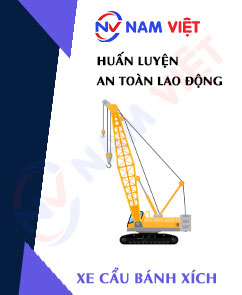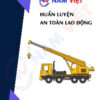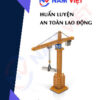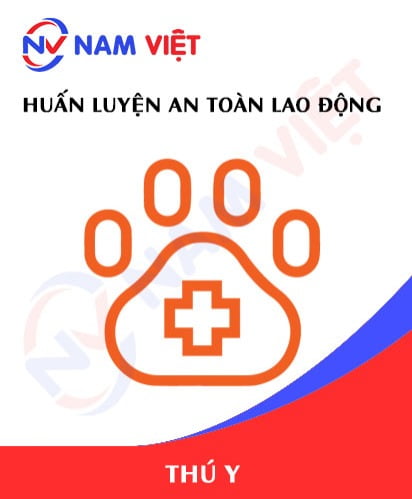Occupational safety training for operating crawler cranes
99,000 ₫
Note: The above price is calculated per person and may fluctuate depending on the number of participants in the course and market conditions. For more accurate pricing, please refer to the price list or contact our consulting staff directly.
Occupational safety is a critical issue when operating a crawler crane and must be addressed promptly to ensure the health and safety of workers while enhancing the reputation of businesses. The Occupational Safety Training course is one of the effective solutions to raise awareness on how to prevent workplace accidents for workers operating crawler cranes.
Table of Contents
Toggle1. Overview of Crawler Cranes
a. What is a Crawler Crane?
Crawler cranes are a type of crane used in construction and engineering projects to lift and move heavy and bulky materials. The main feature of crawler cranes is their tracked undercarriage, instead of the conventional wheels found on wheeled cranes. The tracked system allows crawler cranes to operate on uneven ground, soft soil, or hilly terrain.
Crawler cranes typically have a high lifting capacity and can be equipped with auxiliary devices such as long booms to reach greater distances. They are commonly used in large construction projects such as high-rise buildings, bridges, factories, and other projects requiring heavy lifting. Their ability to move on difficult terrain and lift heavy loads are key advantages of crawler cranes.

b. Applications of Crawler Cranes in Production
Crawler cranes have many important applications in manufacturing, especially in heavy industries and production processes that require lifting and moving heavy, bulky materials. Some major applications include:
- Production and transportation of industrial machinery: Crawler cranes can lift and move heavy industrial machinery during production, from manufacturing locations to assembly or maintenance areas.
- Transporting heavy materials: In industries such as steelmaking, automotive production, and machinery manufacturing, crawler cranes are used to lift and move heavy materials like steel, cast iron, and large components.
- Construction and installation of production facilities: Crawler cranes are often used to build and install new production facilities, including moving and installing machinery, electrical systems, and other industrial structures.
- Shipbuilding and assembly: In the shipbuilding industry, crawler cranes are used to lift and move ship components, from steel structures to onboard machinery and equipment.
- Working in challenging environments: Crawler cranes are suitable for dusty, oily, or high-temperature environments where wheeled cranes may not operate efficiently.
- Maintenance and repair: Crawler cranes can lift and replace machinery and equipment components during maintenance and repair, reducing downtime and increasing production efficiency.

c. Industries Using Crawler Cranes
Crawler cranes are widely used in many manufacturing industries, especially heavy industries requiring lifting and moving large materials. Common industries using crawler cranes include:
- Steel manufacturing: Crawler cranes lift and move heavy steel coils and plant components.
- Automotive production: Crawler cranes lift and move automotive parts such as frames and engines.
- Industrial machinery production: Crawler cranes transport and install heavy machinery.
- Shipbuilding: Crawler cranes lift and move ship components, including steel structures and machinery.
- Energy production: Crawler cranes install and maintain energy equipment, such as turbine blades.
- Construction and civil engineering: Crawler cranes lift heavy construction materials like concrete blocks, rebar, and structural components.
- Mining and ore processing: Crawler cranes lift and transport minerals and mining materials.
- Paper and packaging production: Crawler cranes lift and move heavy paper rolls during manufacturing.
These industries and more rely on crawler cranes to increase efficiency and ensure safety during operation and production.
2. Overview of Safety Training for Operating Crawler Cranes
a. What is Occupational Safety Training?
- Occupational safety training for operating crawler cranes equips workers with knowledge to prevent workplace accidents. Workers who directly operate crawler cranes belong to Group 3.
- This safety training course helps workers recognize hazards, prevent risks, and reduce the likelihood of workplace accidents during operations.
REGISTER FOR OCCUPATIONAL SAFETY TRAINING
b. Training Duration
Initial Safety Training Duration:
- Total training time is at least 24 hours, including assessment time.
- 8 hours theory on policies and laws regarding occupational safety and hygiene
- 8 hours theory on basic occupational safety and hygiene knowledge
- 4 hours theory on specialized training content
- 2 hours practical training on specialized content
- 2 hours final theoretical examination
The training center schedules multiple sessions depending on worker availability. Typically, there are 6 sessions over 3 days, provided the company allows continuous training time.
Periodic Safety Training Duration:
- Before the safety card expires, workers must undergo periodic occupational safety training, with a duration of at least 50% of the initial training time.
Note: Total periodic safety training is at least 12 hours, including assessment. After successfully completing the course and passing the test, workers are reissued or renewed a safety card.
c. Training Content
| No. | TRAINING CONTENT | TRAINING TIME (HOURS) | |||
| Total | Breakdown | ||||
| Theory | Practice | Assessment | |||
| I | Occupational safety and hygiene policies and laws | 8 | 8 | 0 | 0 |
| 1 | Overview of legal documents on occupational safety and hygiene. | 6 | 6 | ||
| 2 | System of standards and technical regulations on occupational safety and hygiene. | 1 | 1 | ||
| 3 | Specific regulations by state management agencies on occupational safety and hygiene for new, expanded, or renovated facilities, machinery, equipment, and materials with strict safety and hygiene requirements. | 1 | 1 | ||
| II | Basic knowledge of occupational safety and hygiene | 8 | 8 | 0 | 0 |
| 1 | Basic knowledge of hazardous and harmful factors in the workplace. | 4 | 4 | ||
| 2 | Methods to improve working conditions. | 1 | 1 | ||
| 3 | Safety culture in production and business. | 1 | 1 | ||
| 4 | Rights and obligations of employers and employees; safety policies and procedures; functions of safety officers. | 1 | 1 | ||
| 5 | Safety regulations, signs, use of safety equipment, first aid, and occupational disease prevention. | 1 | 1 | ||
| III | Specialized training content | 6 | 4 | 2 | 0 |
| Comprehensive knowledge of machinery, equipment, hazardous substances; risk assessment and management; safe working procedures with machinery and materials requiring strict safety and hygiene. | 6 | 4 | 2 | ||
| IV | Final assessment of safety training | 2 | 2 | 0 | 0 |
| Total | 24 | 22 | 2 | ||
See more training content of all 6 groups
d. Safety Card
After completing the occupational safety training and passing the test, workers are issued a safety card (commonly called Group 3 safety certificate).
The Group 3 safety card shows the worker’s name, date of birth, job, work environment, training duration, red stamp, and signature confirming completion of the course.
According to Clause 2 of Article 24 of Decree 44/2016/ND-CP, there are two cases:
- If the employer and employee have a labor contract, the employer must stamp and seal the Group 3 safety card after the employee completes training and passes the test.
- If the worker is freelance or temporary, without a labor contract, the training unit must stamp and seal the safety card after completion and passing the test.

3. Hazards When Operating Crawler Cranes
Operating a crawler crane is a complex task that requires attention and discipline to ensure safety. Below are some key hazards when operating a crawler crane:
- Overloading: One of the biggest hazards is lifting loads beyond the crane’s capacity. This can lead to imbalance and crane collapse, causing serious injuries or accidents.
- Unsafe lifting and moving: The process of lifting and moving loads must be performed carefully and according to proper procedures. Failure to follow procedures may result in falling loads or damage, endangering people and property nearby.
- Working in extreme weather conditions: Crawler cranes often operate outdoors and face extreme weather conditions such as rain, snow, and strong winds. This increases the risk of accidents.
- Mechanical failures: Mechanical errors or failures in the crane system can lead to dangerous incidents. Regular maintenance and technical inspections are crucial.
- Unsafe working area: Failing to ensure a safe working area around the crane can cause collisions with people or property.
- Non-compliance with safety regulations: Safety rules and procedures must be strictly followed. Ignoring them can lead to accidents and serious consequences.
- Lack of training and discipline: Crawler crane operators must be properly trained and disciplined in their work. Inadequate training can result in mistakes and accident risks.
- Working near power sources: When working near electrical wires or other power sources, there is a risk of contact or electric leakage, endangering people and equipment.
To ensure safety when operating a crawler crane, follow all safety regulations and procedures, provide full training for operators, and regularly inspect and maintain the crane.

4. Measures to Control Occupational Accidents When Operating Crawler Cranes
To control and prevent occupational accidents when operating crawler cranes, several important measures must be implemented. Below are some key measures:
- Training and education: Ensure all crane operators are fully trained on operation and maintenance, including understanding and following safety procedures.
- Regular technical inspections: Conduct periodic technical inspections to ensure safe and efficient crane operation, including checking mechanical parts, electrical systems, and the crane frame.
- Pre-use safety checks: Operators must check all safety systems such as hoists, brakes, crane booms, and lifting equipment before each use to ensure proper function.
- Ensure a safe working area: Define and secure a safe area around the crane, free of people and assets within the danger zone during crane operation.
- Monitor weather and working conditions: Check weather and site conditions before operating the crane. Take additional safety measures in adverse conditions like rain, snow, or strong wind.
- Follow traffic guidance if necessary: If crane operations affect traffic, establish traffic guidance to ensure safety for people and vehicles.
- Use personal protective equipment: Ensure workers near the crane wear appropriate PPE, including helmets, protective clothing, goggles, and gloves.
- Follow safety procedures: All operators and staff must strictly follow safety rules and procedures during crane operation.
- Supervision and evaluation: Continuously monitor crane operations and recommend improvements if needed.
- Develop a safety plan: Create specific safety plans for crane operation in different situations.
- Incident reporting: Report and investigate all incidents, accidents, or unsafe events to ensure preventive measures are implemented.
- Periodic inspection of crawler cranes to detect safety issues such as wear, tear, or mechanical failures, reducing the risk of occupational accidents.
5. Benefits of Occupational Safety Training
An Toan Nam Viet provides enterprises with the following benefits after completing occupational safety training courses as required by Decree 44/2016/ND-CP on occupational safety and hygiene:
- Workers can identify potential risks and take preventive measures to avoid workplace accidents.
- Enterprises can establish risk prevention measures in production, operation, and maintenance processes.
- Minimize costs associated with occupational hazards.
- Continuous production increases labor productivity and product quality.
- Ensure compliance with occupational safety laws and avoid legal risks.
- Enhance reputation and professionalism, improving the brand image of the enterprise.
Nam Viet training courses help individuals prevent external hazards that could cause injury or worse, fatality.
REGISTER FOR OCCUPATIONAL SAFETY TRAINING
6. Customer Feedback After Completing Training
An Toan Nam Viet has years of experience partnering with enterprises across Vietnam, especially in the southern provinces. This responsibility is highly valued, and our Occupational Safety Training has become increasingly professional. Positive feedback and suggestions from businesses have driven our growth. Below are some feedback from partners we served.
See more customer interviews after using the service from An Toan Nam Viet
7. An Toan Nam Viet’s Occupational Safety Training Capability
An Toan Nam Viet is a reputable occupational safety training center in Vietnam, offering continuous courses at factories, production sites, and construction sites nationwide (all 63 provinces).
REGISTER FOR OCCUPATIONAL SAFETY TRAINING
Occupational safety training license
- An Toan Nam Viet has been inspected and certified by the Department of Safety, Ministry of Labor – Invalids and Social Affairs, confirming compliance with occupational safety training regulations.

Training materials
- All training materials in occupational safety courses are reviewed to ensure knowledge accuracy and teaching effectiveness.
- Teaching methods follow An Toan Nam Viet standards, developed by experts in occupational safety training to maximize knowledge absorption.
Facilities
- Controlling classroom factors improves teaching efficiency and student learning outcomes.
- Our training facilities provide spacious classrooms with standard lighting and training equipment.
8. Nationwide Reputable Safety Training Center
At An Toan Nam Viet, we prioritize professional occupational safety training. We carefully prepare every detail, from tools, teaching equipment, curricula, to audio and lighting, ensuring effective learning.
Our instructors are experienced experts with research on hazard identification across industries and prevention methods. Lessons are practical and engaging, helping workers easily grasp knowledge while complying with Decree 44/2016/ND-CP.
Our training center offers reputable and professional services with advantages:
- Competitive training costs with guaranteed quality.
- Flexible training schedules matching company production.
- Fast and legal certification procedures.
- Experienced instructors with years in the field.
- Controlled classrooms improve teaching and learning efficiency.
- Lessons tailored to occupational safety in enterprises.
- Dedicated and professional support for customers.

9. Additional Occupational Safety Training Materials
- Safety materials for operating crawler cranes
- Complete occupational safety training materials
- Occupational safety training test sets
- Crawler crane safety multiple-choice test
- Crawler crane occupational safety training slides
1 review for Occupational safety training for operating crawler cranes
No comments yet















phanminhhang341
Very good safety training service